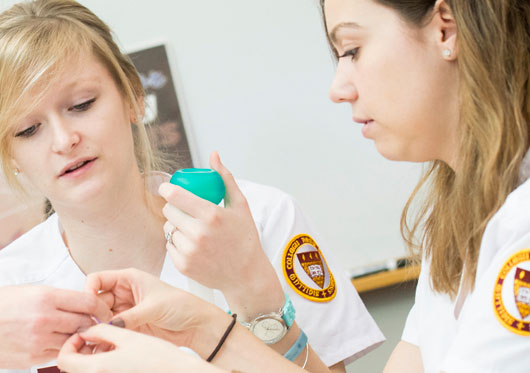Whether you are just starting your career as a nurse and are looking forward to eventually progressing in the field, or you have been working as a nurse for a number of years and are ready to make a change, the great thing about nursing is that you have many options for career development. Two of the most common titles that will be held by senior nurses, and which you may already be considering for yourself, are that of clinical nurse leader (CNL) and nurse practitioner (NP).
But what exactly is the difference between an NP and a CNL?
Below, we answer this question so that you will be better prepared to make an informed decision about your career. In addition to looking at the role and responsibilities of both NPs and CNLs, we also examine the typical path toward achieving the title.
What is a Clinical Nurse Leader?
A clinical nurse leader is an integral part of modern nursing teams focused on point of care. Master's-educated, clinical nurse leaders serve as advanced generalists who coordinate and oversee care of patients under their charge. The role was created by the American Association of Colleges of Nursing (AACN) in 2003.
What does a Clinical Nurse Leader do?
Clinical nurse leaders perform multiple different duties for their patients.
On the one hand, clinical nurse leaders act as a point of contact for their patients. In this role, CNLs coordinate and collaborate with each of their patients’ caregivers with a goal of:
- Changing patient care plans if and when necessary to improve patient outcomes
- Improving communication between each member of the medical team
- Ensuring clarity as to what medical tests and procedures need to happen (and when)
- Ensuring that all of the organization’s internal policies are being appropriately followed
- Generally improving patient outcomes by serving as an additional layer of oversight
In this regard, CNLs are often thought of as conductors or air traffic controllers, because they coordinate all of the complicated movements necessary to support each patient.
On the other hand, CNLs must regularly exercise critical thinking skills by evaluating the systems and structures currently in use within their facility or organization, with a goal of addressing recurring challenges or improving patient wellbeing.
How to Become a Clinical Nurse Leader
In order to become a clinical nurse leader, you will need to complete the following steps:
- Earn a Bachelor of Science in Nursing (BSN).
- Earn your license as a registered nurse (RN).
- Earn a Master of Science in Nursing (MSN) with a CNL specialization.
- Pass the Commission on Nurse Certification (CNC) CNL exam.
Nurses who hold an associate's degree in nursing and wish to become a CNL can either follow the route outlined above (earning their BSN and then MSN) or may be able to enroll in an RN-to-MSN bridge program for CNLs.
What is a Nurse Practitioner?
A nurse practitioner is an advanced practice registered nurse (APRN) who holds either an MSN or Doctor of Nursing Practice (DNP) and acts as a primary care provider for the patients under their care. Because of their advanced education and training, NPs are able to prescribe medications, order diagnostic tests, diagnose patient conditions, and treat patients. In many states, NPs are able to perform these duties autonomously without the oversight of a physician.
What does a Nurse Practitioner do?
Nurse practitioners serve as the primary care provider for their patients. In this role, NPs may perform any combination of the following duties:
- Recording patient medical histories
- Evaluate patient symptoms
- Performing routine and detailed examinations and assessments
- Collecting information and samples from patients
- Observing patients and analyzing their test results
- Creating individual treatment plans
- Referring patients so they acquire the treatment they need
- Prescribing medications and monitoring results
- Ordering lab tests and diagnostic procedures such as X-rays
- Performing small medical procedures, depending on specializations
- Managing RNs, LPNs, CNAs, and other staff members
Because nurse practitioners are not overseen by physicians in many states, they typically enjoy much more freedom and autonomy than an RN.
How to Become a Nurse Practitioner
In order to become a nurse practitioner, you’ll need to complete the following steps:
- Earn a Bachelor of Science in Nursing.
- Become a registered nurse.
- Complete either a Master of Science in Nursing or Doctor of Nursing Practice.
Because an MSN is required to become a nurse practitioner, those who know early that they wish to become an NP will typically earn their BSN before becoming an RN. Of course, it is possible to work as an RN with only your ADN. If you earned your ADN, you can either go back to school to complete a BSN and then either your MSN or DNP, or you can find an RN-to-MSN bridge program.
Key Differences Between a CNL and NP
The primary difference between the two roles is that while a nurse practitioner is trained to act as the primary caregiver for their patients without oversight from a physician, clinical nurse leaders are specifically trained to coordinate patient care. In this regard, CNLs tend to be nursing generalists, while NPs tend to be trained to work with a particular patient population.








